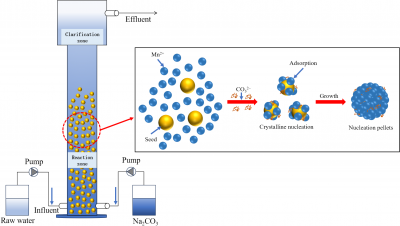The management of non-small cell lung cancer (NSCLC) is experiencing a transformative shift as the field moves beyond traditional genomic markers to include protein-based and computationally derived biomarkers. This change is largely driven by the development of new therapies, particularly antibody-drug conjugates (ADCs), and a deeper understanding of therapeutic resistance. Dr. Soo-Ryum (Stewart) Yang, an assistant attending pathologist at Memorial Sloan Kettering Cancer Center, presented these insights at the 20th Annual New York Lung Cancers Symposium on November 15, 2025.
In his presentation, Dr. Yang identified four key trends shaping the future of NSCLC management. Firstly, there is an increasing focus on protein-based immunohistochemistry (IHC) biomarkers for ADCs. Secondly, the actionability of tumor suppressor genes is gaining attention. The third trend highlights the therapeutic potential of synthetic lethality, while the fourth involves the integration of computational pathology into diagnostic processes.
Despite these advancements, the persistent issue of tissue scarcity complicates the implementation of comprehensive biomarker testing. Dr. Yang emphasized the need for multiplex IHC and broad panel next-generation sequencing (NGS), along with artificial intelligence (AI), to expand access to personalized therapies for a larger NSCLC patient population.
A crucial development in this field is the shift from identifying mutated genes to measuring the expression levels of proteins on cancer cell surfaces. This approach offers new treatment pathways for patients. While PD-L1 IHC testing has been established for guiding checkpoint inhibitor therapy, it is now being utilized to inform ADC usage. Dr. Yang highlighted two essential protein biomarkers in NSCLC: HER2 and c-MET overexpression.
HER2 overexpression is observed in up to 20% of NSCLC patients, with the highest level of expression (IHC 3+) present in approximately 3% of cases. Dr. Yang pointed out that there is no correlation between HER2 mutation status and overexpression, which is critical for treatment decisions. The FDA’s recent approval of fam-trastuzumab deruxtecan-nxki (T-DXd; Enhertu) for HER2-positive solid tumors, including NSCLC patients who have undergone prior treatment, was supported by the phase 2 DESTINY-Lung01 study. Dr. Yang suggested that the HER2 scoring guidelines used for gastric cancer should also apply to NSCLC testing.
In addition to HER2, c-MET overexpression is prevalent in NSCLC, with actionable c-MET-high status—defined as over 50% of tumor cells showing 3+ staining—found in up to 17% of EGFR wild-type cases. The FDA granted accelerated approval to telisotuzumab vedotin-tllv (teliso-V; Emrelis) for this patient population, drawing on data from the phase 2 LUMINOSITY trial.
Dr. Yang acknowledged that the integration of HER2 and c-MET IHC screening presents challenges to existing diagnostic workflows. He proposed a flexible approach with standardized options, allowing institutions to tailor workflows based on their resources and multidisciplinary input.
Emerging biomarkers also promise to refine personalized treatment for NSCLC patients. KRAS mutations, present in up to 40% of lung adenocarcinomas, are particularly noteworthy. The KRAS G12C mutation is the most frequently occurring, followed by G12V and G12D mutations. Dr. Yang noted that G12D mutations are often linked to a history of light or no smoking, a lower tumor mutational burden, and reduced PD-L1 expression, resulting in poorer responses to chemoimmunotherapy.
Targeted therapies such as sotorasib (Lumakras) and adagrasib (Krazati) are already established for KRAS G12C, while ongoing clinical trials are exploring therapies for other KRAS mutations. Dr. Yang highlighted the promising results of zoldonrasib (RMC-9805), a KRAS G12D inhibitor, which demonstrated a 61% overall response rate in an early-phase study.
Furthermore, mutations in the tumor suppressor genes STK11 and KEAP1 are found in up to 20% of lung cancers and often co-occur with KRAS mutations. These mutations can create an immunosuppressive tumor environment, contributing to primary resistance to immunotherapy. Dr. Yang referenced the phase 3 POSEIDON trial, which investigated the combination of the PD-L1 inhibitor durvalumab (Imfinzi) and the CTLA-4 inhibitor tremelimumab with chemotherapy. The trial suggested that this combination could enhance the effectiveness of treatment in patients with STK11/KEAP1 mutations.
Another area of investigation involves the MTAP gene, whose deletion is associated with poor outcomes in lung cancer. Dr. Yang explained that targeting this deletion could create vulnerabilities in cancer cells through a technique known as synthetic lethality. Detection methods for MTAP deletions include NGS and IHC, with Dr. Yang advocating for an initial NGS screening followed by confirmatory IHC testing for ambiguous cases.
Dr. Yang also highlighted TROP2 as a potential target for ADC development, noting that datopotamab deruxtecan-dlnk (Dato-DXd) showed promise in a phase 3 study. Although the trial demonstrated progression-free survival benefits, it did not establish a significant overall survival advantage. The study utilized AI-driven methods to enhance predictive power, creating a quantitative scoring system for TROP2 expression.
As the field of lung cancer treatment evolves, the focus is expanding beyond genetic analysis to include a comprehensive approach that integrates protein analysis, AI insights, and innovative therapeutic strategies. Dr. Yang concluded that the next few years will be crucial for establishing broad-panel NGS and IHC, along with AI, as foundational elements of biomarker testing in lung cancer management.







